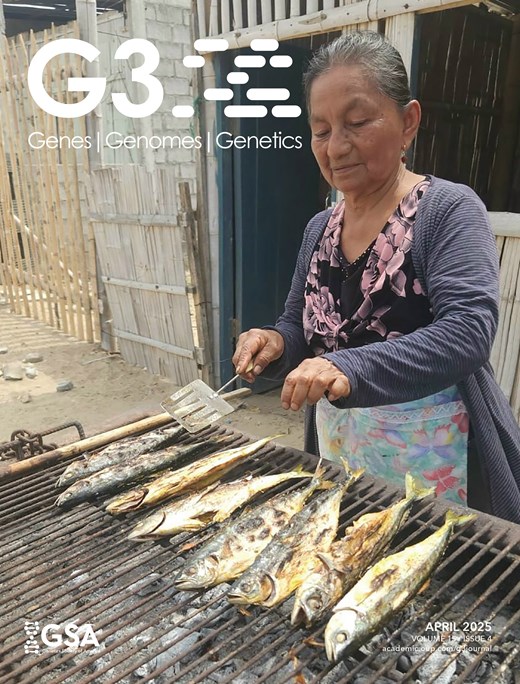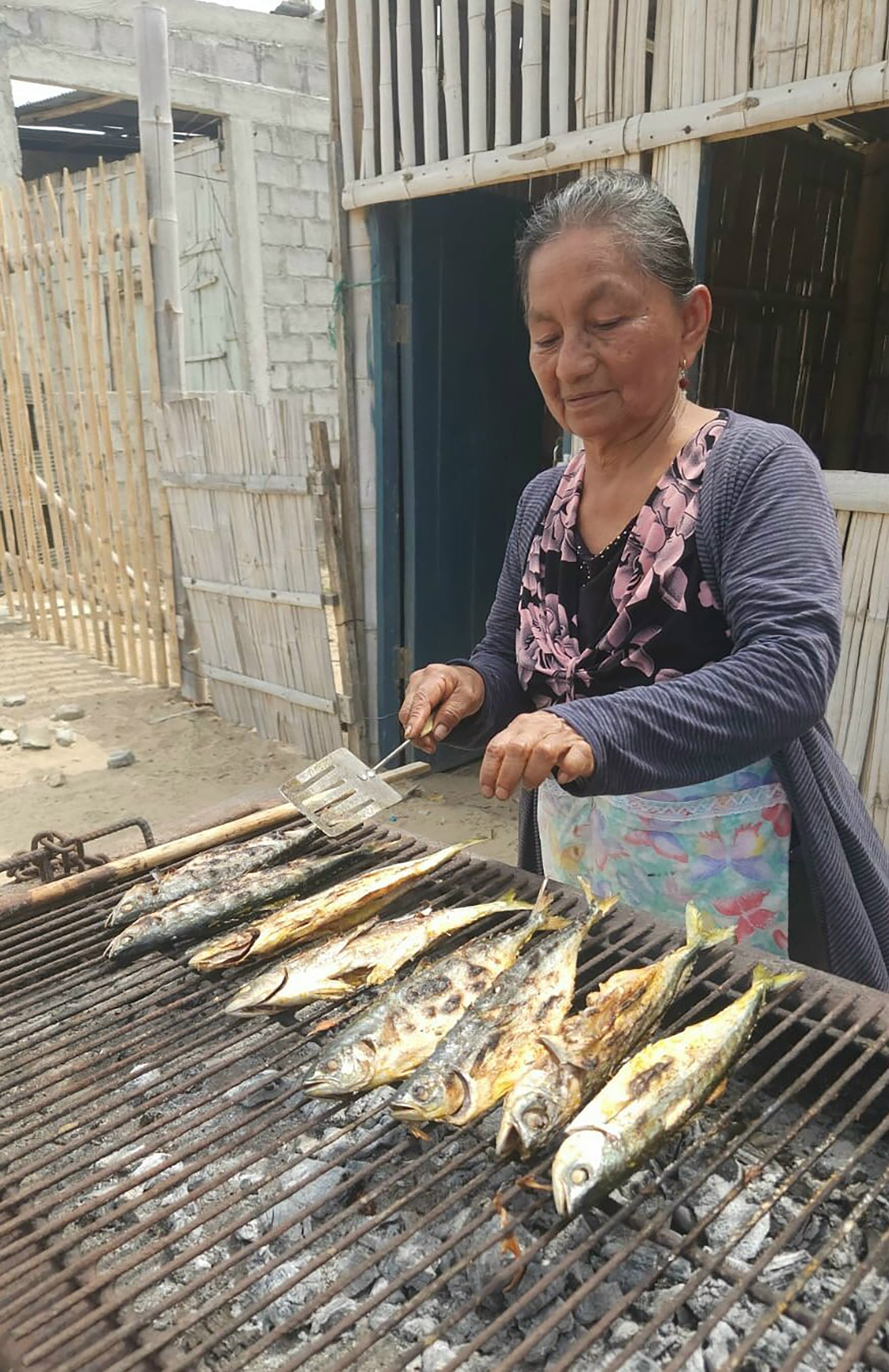
Cover image

Volume 15, Issue 4, April 2025
Editorial
Biobanks in GENETICS and G3: tackling the statistical challenges
Genomic Data Analyses in Biobanks
Fast analysis of biobank-size data and meta-analysis using the BGLR R-package
Here Pérez-Rodríguez et al. present a new set of computational routines for analysis of biobank size-data which for genomic prediction. Routines were added to the existing R package BGLR which will allow users to fit linear models with sufficient statistics based on genotypic and phenotypic data very efficiently from a Bayesian perspective. The authors illustrate the use of the proposed software through examples with real data.
SURFBAT: a surrogate family based association test building on large imputation reference panels
Here Herzig et al. present a novel statistical method for testing associations between genotypes and phenotypes in human populations. Rather than having to recruit control individuals, the authors’ method allows for publicly available panels of reference haplotypes (typically used for missing genotype imputation) to serve as shared controls.
Investigation
A TTPA deletion is associated with retinopathy with vitamin E deficiency in the English Cocker Spaniel dog
Retinopathy with vitamin E deficiency (RVED) is an inherited disease in the English Cocker Spaniel that causes blindness and ataxia. It has many similarities to ataxia with vitamin E deficiency (AVED) in humans. This study investigated the genetic basis of RVED and reveals it to be associated with a mutation in TTPA – the same gene that causes AVED. A DNA test has now been developed which will enable eradication of the disease from this dog breed and also allow for the identification of presymptomatic individuals. The latter would allow for early therapeutic intervention and prevention of retinal (and neurological) disease.
Nested likelihood-ratio testing of the nonsynonymous:synonymous ratio suggests greater adaptation in the piRNA machinery of Drosophila melanogaster compared with Drosophila ananassae and Drosophila willistoni, two species with higher repeat content
A Sox2 enhancer cluster regulates region-specific neural fates from mouse embryonic stem cells
Signatures of natural selection may indicate a genetic basis for the beneficial effects of oily fish intake in indigenous people from coastal Ecuador
Inferring demographic and selective histories from population genomic data using a 2-step approach in species with coding-sparse genomes: an application to human data
VPS13D mutations affect mitochondrial homeostasis and locomotion in Caenorhabditis elegans
An inducible and reversible system to regulate unsaturated fatty acid biosynthesis in C. elegans
Dynamic changes in gene expression through aging in Drosophila melanogaster heads
Humanized Saccharomyces cerevisiae provides a facile and effective tool to identify damaging human variants that cause exosomopathies
Genetic differentiation in the MAT-proximal region is not sufficient for suppressing recombination in Podospora anserina
The histone chaperone Spn1 preserves chromatin protections at promoters and nucleosome positioning in open reading frames
Improving genomic selection in hexaploid wheat with sub-genome additive and epistatic models
Genome-wide association studies dissect the genetic architecture of seed and yield component traits in cowpea (Vigna unguiculata L. Walp)
Disruption of recombination machinery alters the mutational landscape in plant organellar genomes
Conservation of imprinted expression across genotypes is correlated with consistency of imprinting across endosperm development in maize
Recombination and structural variation in a large 8-founder wheat MAGIC population
Improving wheat grain yield genomic prediction accuracy using historical data
Genome Reports
De novo genome assembly of the Edwardsiid anthozoan Edwardsia elegans
Genomes of the Caribbean reef-building corals Colpophyllia natans, Dendrogyra cylindrus, and Siderastrea siderea
The genome sequence and genomic diversity of soybean tentiform leafminer (Macrosaccus morrisella)
Genomic comparison of the temperate coral Astrangia poculata with tropical corals yields insights into winter quiescence, innate immunity, and sexual reproduction
De novo whole-genome assembly of the critically endangered southern muriqui (Brachyteles arachnoides)
The southern muriqui (Brachyteles arachnoides) is one of the largest nonhuman primate from the Neotropics, but deforestation and illegal hunting have led to a substantial and continuing decline in the muriqui population. Genomic tools have been critical to design strategies to promote conservation of endangered species. Here, Faulk et al. report the first whole-genome assembly of the southern muriqui. This high-quality assembly will serve as reference genome for the species, and will aid in conservation efforts for this critically endangered primate species.





